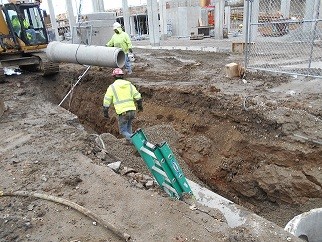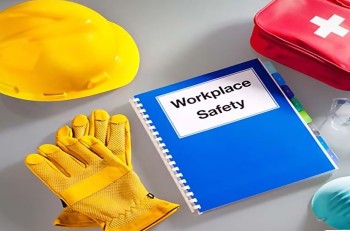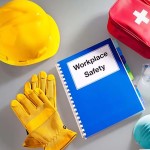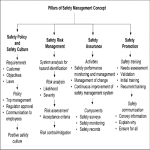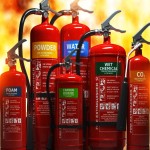The Author: Sherifudeen Olasheni Carew is the Managing Director of PureConsult Ltd, UK. & Nigeria and a member of the Executive Council of Badagry Chamber of Commerce Industry Mines and Agriculture (BACCIMA).
Construction sites are bustling with activity, but they also present a multitude of hazards that can lead to injuries, illness, and even fatalities. Recognizing these hazards and implementing adequate control measures are essential for ensuring the safety of everyone on site.
Another description of construction site hazards is potential sources of harm or danger that can cause injury, illness, or damage to property on construction sites.
Some common construction hazards are:
Physical Hazards:
· Falling objects: Falling materials, tools, and debris are major risks. Control measures include:
· Overhead protection: Scaffolding, netting, and canopies to catch falling objects.
· Safe material storage: Secure storage areas away from work zones.
· Personal protective equipment (PPE): Hard hats, safety glasses, and closed-toe shoes.
· Slips, trips, and falls: Uneven surfaces, spills, and poor lighting can cause slips and falls.
Control measures include:
· Maintaining clean and tidy work areas.
· Properly securing and marking electrical cords and hoses.
· Adequate lighting in all work areas.
· Non-slip footwear for workers.
Struck-by accidents: Vehicles, machinery, and falling materials can cause serious injuries. Control measures include:
· Traffic control plans and designated walkways for pedestrians.
· Clearly defined work zones and restricted areas.
· Properly maintained and guarded machinery.
· Reverse warning systems on vehicles.
Environmental Hazards:
· Dust and fumes: Construction activities generate dust and fumes that can cause respiratory problems. Control measures include:
· Dust suppression methods like water spraying or ventilation systems.
· Properly vented exhaust systems for equipment.
· Respirators for workers in dusty environments.
· Noise: Loud machinery and tools can cause hearing damage.
Control measures include:
· Hearing protection like earplugs or earmuffs for workers.
· Maintaining equipment in good working order to minimize noise.
· Limiting exposure time to loud noise.
· Extreme temperatures: Working in hot or cold weather can lead to heat stroke, hypothermia, and other health problems. Control measures include:
· Providing breaks in cool or shaded areas during hot weather.
· Warm work clothing and proper hydration in cold weather.
· Training workers on heat/cold stress prevention.
Chemical Hazards:
Exposure to hazardous materials: Paints, solvents, and other chemicals can cause skin irritation, respiratory problems, and other health issues.
Control measures include:
· Proper labels and warnings on chemicals.
· Proper handling and storage of chemicals.
· Use of appropriate PPE like gloves, masks, and overalls.
· Training workers on chemical safety procedures.
Additional Considerations:
· Regular safety inspections and audits: Regularly evaluating the workplace for hazards and ensuring control measures are implemented effectively.
· Safety training for all workers: All workers, regardless of experience, should receive training on construction safety hazards and control measures.
· Emergency preparedness: Having a plan in place for emergencies like fires, accidents, and medical emergencies is crucial.
· By implementing these control measures and promoting a culture of safety, construction companies can significantly reduce the risk of accidents and illnesses on their sites and ensure the well-being of their workers. Remember, safety is everyone's responsibility on a construction site.
To prevent or reduce these hazards, construction workers and employers should follow some safety measures, such as:
· Conducting risk assessments and implementing safety plans and procedures.
· Providing and using appropriate personal protective equipment (PPE), such as helmets, gloves, goggles, ear plugs, masks, etc.
· Training and educating workers on how to work safely and handle hazards.
· Inspecting and maintaining equipment and tools regularly and reporting any defects or malfunctions.
· Ensuring adequate ventilation, lighting, and signage on the site.
· Following the local and national building codes and regulations.
·
Reporting and
recording any accidents, injuries, or near misses.
Photo source:
https://www.safetyresources.com/working-at-height-hazards-and-using-control-measures
